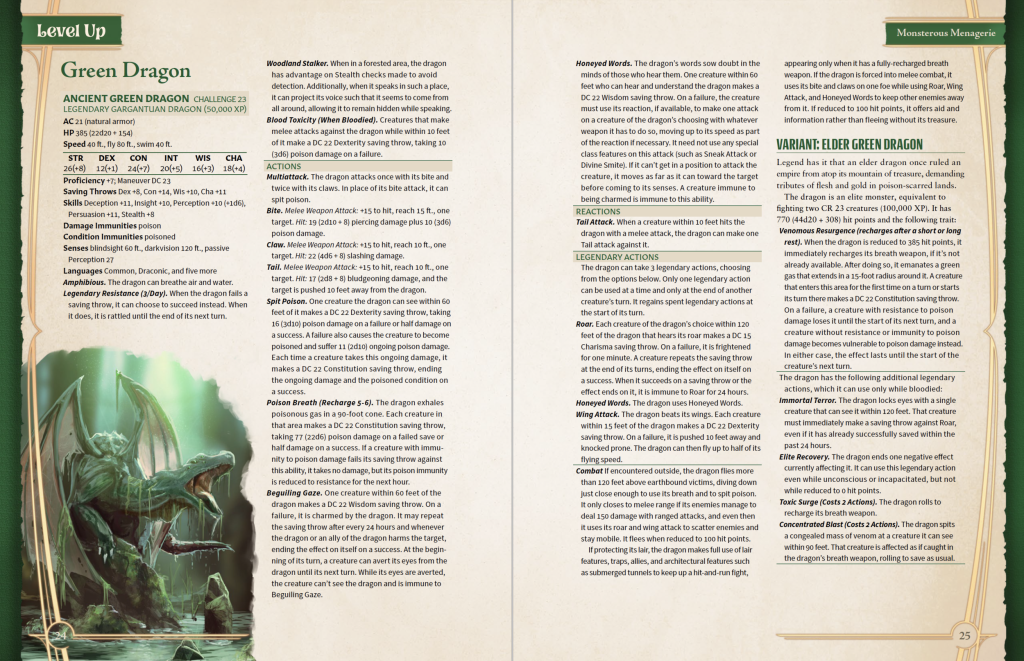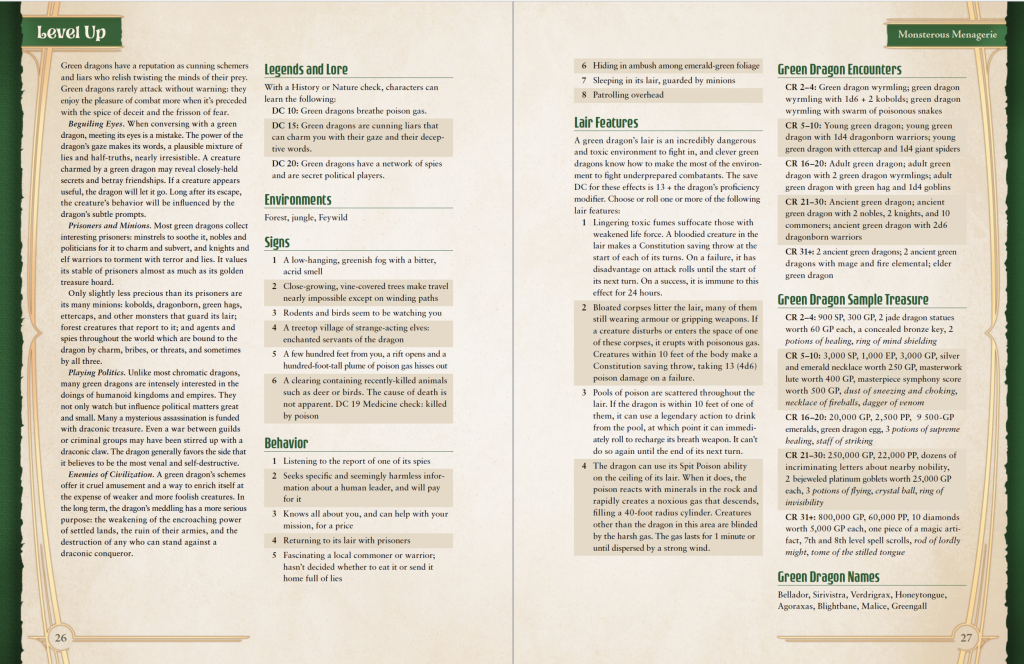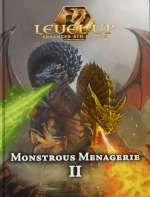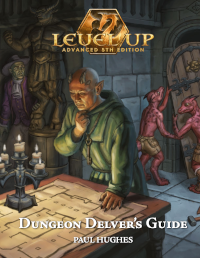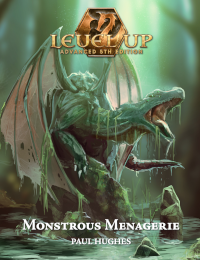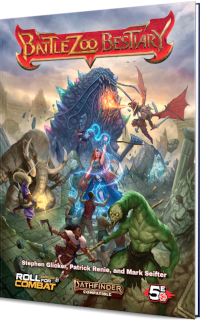I’m writing a new 5e-compatible treasure generator and releasing it under the Open Game License. That means that I won’t be able to include the magic items which aren’t included in the open-content System Resource Document (SRD).
How much of a problem is this?
Of the nearly 400 magic items in the Dungeon Master’s Guide, nearly all are in SRD. There are fewer than 30 non-SRD magic items. Let’s examine each one. I’ll assign each item a simple rating: WON’T MISS IT, WILL MISS IT, or WILL MISS IT A LOT. For the items that I’ll miss a lot, I’ll consider OGL-compatible alternatives.
Alchemy jug: The alchemy jug creates liquids.
You may look at the list of liquids the alchemy jug can create and wonder, why mayonnaise? There’s a charming story about that.
I like the alchemy jug well enough. My problem with it is it doesn’t go far enough. Each day it dispenses one of 10 liquids, in quantities ranging from 12 gallons (salt water) to 1/2 ounce (poison). But it’s a once-a-day item: if you used it to get a gallon of honey, or a dose of the surprisingly useless basic poison (DC 10 check to avoid 1d4 damage), you can’t use it get 2 gallons of mayonnaise until tomorrow. Compare that to the decanter of endless water, also an uncommon item, which can produce truly prodigious quantities of water, allowing players to defeat weighing puzzles and drown dungeons and allowing DMs to explain how colonies of monsters survive in the dungeon. The decanter of endless water is like carrying the sea in your back pocket; the alchemy jug is like carrying around a large jar. With reduced power comes reduced possibilities for creativity and hilarity. It would be more inspiring if all of the quantities were multiplied by, say, 10. Rating: WILL NOT MISS
Cap of water breathing and mariner’s armor: I’m going to do these two similar aquatic items together. The cap of water breathing (uncommon) lets you breathe underwater. The mariner’s armor (uncommon) gives you a swim speed equal to your walking speed. Compare these to the ring of swimming (also uncommon, and in the SRD) which gives you a swim speed of 40, and the cloak of the manta ray (also uncommon, and in the SRD) which lets you breathe underwater AND gives you a swim speed.
Apart from the possible benefit of using a different item slot, the cap is strictly worse than the cloak of the manta ray. The mariner’s armor is not too different from the ring of swimming, but I’d rather have the ring, because it doesn’t lock me into otherwise ordinary armor.
Mariner’s armor also floats you towards the surface when you hit 0 hp, which is unique and somewhat useful. That raises this item’s value a bit. Still, if this armor didn’t exist, I probably wouldn’t invent it. Rating: WILL NOT MISS EITHER
Cloak of invisibility. The cloak of invisibility has the exact same power and rarity as the ring of invisibility. It’s impossible to miss one while the other is in the game.
Instead of having two functionally-identical items in the DMG, I’d prefer it if every magic item had a few different variations listed: maybe a cursed version, a few that are different objects, a few with limitations or bonus powers. This would hugely increase the number of magic items without adding a lot more design and balance work. For example, what if the listing for the Ring of Invisibility looked like this:
Ring of invisibility
Ring, legendary
While wearing this ring, you can turn invisible as an action. Anything you are wearing or carrying is invisible with you. You remain invisible until the ring is removed, until you attack or cast a spell, or until you use a bonus action to become visible again.
Variations (roll 1d10)
1-5: normal
6: curse: though it’s not immediately apparent, the wearer is visible to undead
7: variant: cloak
8: variant: cap
9: inconvenient variant: eyeless black mask. The wearer is blind while invisible
10: bonus ability: while invisible, the wearer can see invisible creatures and objects as if they were visible
That’s the kind of thing I’m doing for every magic item in the Inspiration app. This makes a super-similar item like the Cloak of Invisibility unnecessary, as well as, I hope, doling out more wonder to jaded players. That said, it’s too big a project for my two-page random magic item replacement. For now, we can just cut the Cloak of Invisibility. The frequency of the Ring can increase slightly to cover for it. Rating: WILL NOT MISS
Driftglobe. I think I don’t fully understand the driftglobe. What is it for? On the surface it seems like a nice, flavorful alternative to the Light cantrip: a little ball that hovers near you and sheds light on command. However, that’s not what it actually does! It doesn’t float near you at all: it follows 60 feet behind you. That’s weird because the Light spell has a radius of 40 feet, so the driftglobe doesn’t actually illuminate you most of the time.
The driftglobe can also cast Daylight once a day, which sheds bright light for 60 feet and dim light for another 60, which would actually let you peer forward in dim light, which is nice I guess.
What is the driftglobe for? Is it strictly for looking for pursuers? Or for setting up a decoy for an ambush? I’m giving it a provisional grade of WILL NOT MISS until someone explains what it’s meant to be.
Efreeti chain. +3 AC! Fire damage immunity! Walk on lava!
Fire immunity is nice. It’s easy to get resistance to anything, but hard to get immunity to a dragon breath damage type. Except poison. It’s a wonder there are any green dragons left, poor dears.
This is a pretty solid legendary item, though not the most showy. Its main problem is that it’s attached to chain mail, a weak type of armor. +3 chain is functionally equivalent to +1 plate armor. Still, it’s not bad. Rating: WILL MISS
Elixir of health. Elixir of Health is the Lesser Restoration spell in a bottle: it cures poison, diseases, and the blinded, deafened, and paralyzed conditions. Which is useful, I guess… after all, some parties don’t have clerics. But it’s a rare item. Compare it to Keoghtom’s Ointment (called Restorative Ointment in the SRD: character names are intellectual property, maybe Ed Greenwood will write a novel about Keoghtom someday), an Uncommon item, which cures poison and disease, PLUS 2d8+2 hit points, AND comes in 1d4+1 doses. I’d rather have that. All you get from the elixir of health is the blindness, deafness, and paralysis cures: in 5e these are generally short-term effects, sometimes “repeat the saving throw at the end of each of your turn” effects. Rating: WILL NOT MISS
Gloves of thievery. All this is is a garment that gives a +5 bonus to a skill. I could come up with these all day long: Cloak of survival. Pointy hat of arcana. Mayor’s sash of diplomacy.
But despite their simplicity, I think the gloves make story space for themselves. They’re the best magic item for pure thieves. I assume every npc master thief probably has a pair of gloves of thievery – do you think they steal them from each other as a rite of passage? – and as a DM I’ve equipped them on a few NPCs. Rating: WILL MISS
Instrument of the bards: The bardic instruments are interesting: they’re not the “+1 to spell attacks” typical to the big spellcaster implements. Instead, each instrument grants seven daily spells.
Storywise, a magical instrument seems like a must-have for a bard, and beyond these instruments, there’s not too much available. Every bard can’t be playing pipes of the sewers. Without these items, there’s no bardic capstone item. Rating: WILL MISS A LOT
Potion of fire breath. This is a great little low-level potion. It gives you a nicely balanced attack: 4d6 or save for half, usable 3 times – and it’s a vivid image: take a swig and then breathe fire, like a carney or like Xena in the credits of her show. It also fills a need. There are not a lot of consumables that let a non-spellcaster do big damage.
Fire is clearly the best element to breathe, but considering how monotonously often this potion comes up in treasure, I wouldn’t mind a little more variety. Exhaling a blast of cold or poison would certainly make sense and be cool. Rating: WILL MISS
Potions of greater healing, superior healing, supreme healing. I was surprised to see these weren’t in the SRD, because they’re very similar to items in the third edition SRD – potion of cure serious wounds, etc – and generally anything in the 3e SRD is in the 5e SRD. But yeah, they have different names. There’s a use for a high-powered potion to slug down in the heat of a hard combat. Rating: WILL MISS A LOT
Potion of invulnerability. This grants resistance against all damage for a minute. If you can control the pace of a battle against a boss, you essentially get double hit points (resistance to all damage). This is a nice item with a powerful, if not very cinematic, effect that rewards resource management – and possibly trivializes one encounter. Would I miss it? As a player, maybe. It’s always fun to breeze through the DM’s setpiece battle. But as a DM: WILL NOT MISS
Potion of longevity. Eternal youth… the dream of every NPC and completely irrelevant to every PC. Not a lot of PCs die of old age… at least onscreen. Although the potion of longevity is fun for worldbuilding, it doesn’t need to come up in treasure. Rating: WILL NOT MISS
Potion of vitality. This potion is one of the only ways to remove exhaustion besides bed rest. In a game with plentiful magical and nonmagical healing, that makes it useful. Rating: WILL MISS
Rod of resurrection. The Rod of Resurrection is great because it lets a non-divine party have access to resu – wait, what’s this? Requires attunement by a cleric, druid, or paladin? Well, I guess it saves a diamond worth 1,000 GP. A neat thing about this item is it has a 1 in 20 chance of being destroyed each time it is used to cast Resurrection. Rating: WILL NOT MISS
Rod of the pact keeper. I’m going to come out and say it. I hate this item. The rod of the pact keeper is a warlock-only item that’s a beefier version of the wand of the war mage (useable by any spellcaster). Both items add +1, 2, or 3 to spell attack rolls. The rod of the pact keeper ALSO adds its bonus to the warlock’s save DCs. This means, just to pick an example out of the air, that my party’s level 12 warlock with a +2 rod, spell DC 19, can trivially end fights against vaguely level-appropriate beasts like remorhaz, rocs, hydras, etc. with Hold Monster (90% success rate). (Yeah, one of my players did this to me. It was a behir. Rest in peace – you never got your chance to shine.)
Increasing DC is more harmful than increasing spell attack, because most monsters have a dump stat which you can target to lock them down. As a DM, I would not mind if all if all pact keeper rods turned into wands of the war mage. Rating: WILL DEFINITELY NOT MISS
Saddle of the cavalier. In a game with as little mounted combat as D&D, this is a very niche item. But I have a confession. In a SRD-only game, I’d actually miss it! I’ve had several characters with saddles of the cavalier. Sure, it’s not like getting unhorsed happens every day in d&d, but might be a life saver if you’re riding a hippogriff. And it’s a great item to give a dirtbag NPC in a joust. Rating: WILL MISS, BUT MAYBE THAT’S JUST ME
Scroll of protection. In 30 years of playing D&D, I’ve never encountered one of these. I’d love to hear your anecdotes about how they turned the tide of an adventure. Until then, I WILL NOT MISS
Sending stones. This is the item I’d miss most in a SRD-only campaign! Our party had a set of sending stones in the last game I played in as a character, and I liked everything about them. I liked how they enabled reconnaissance and splitting the party. I liked the fiddly details of deciding who got to carry one of the stones and who had to stay in touch by other means. Of all the magic items collected by our high-level party, the Stones got the most screen time. (The Rod of Security probably came next.) Rating: WILL MISS A LOT
Staff of the adder. This is a fun item: it does as much as 4d6 damage, and it has hit points so people can attack it and permanently destroy it. It’s significant enough to be exciting and it requires the player to take a risk. Plus it’s vivid. It says something about you if your main weapon is a snake staff that bites people. That said… it’s much easier to imagine in the hands of an evil NPC than as the main weapon of the typical party cleric. Plus, the SRD also contains the Staff of the Python, for all your sticks-to-snakes needs. Rating: WILL NOT MISS
Sword of answering. For whatever reason, I never encountered the Swords of Answering before 5e, although they’ve been around since 1e. I’ve never used one as either a player or a DM. I think their names seem a little hokey and theosaurusy to me, at least in a group. A single sword named Last Quip might be OK, though I’m certain that nothing could redeem the name Replier.
The power of the sword is cool: use a reaction to make a riposte when attacked. It sounds like the type of item which makes everyone remember you have it, which is good: “You take 12 damage.” “I reply with Replier.” Might make up for the hokey name. Rating: I MEAN I WON’T MISS IT BECAUSE I’VE NEVER USED IT BUT IT SEEMS NICE ENOUGH, COULD BE FUN. BUT IF BACKED INTO A CORNER I… I… GUESS I WON’T MISS IT
Sword of vengeance. A cursed +1 sword that makes you attack the person who hit you. This is a tough one, since my criterion for these ratings was “would I miss it”. As a player, I obviously wouldn’t miss a cursed item. As a DM, I like the sword well enough. The curse isn’t debilitating most of the time – it makes the player do what they would probably do anyway most of the time – and there is a listed way to break the curse and end up with a nice magic item. I like that cursed item design.
Also, the sword fills a niche: there has to be a cursed sword in the game. (Is there only one cursed sword in 5e? That’s crazy. There should be more. There’s like 15 in my app.)
My only criticism is that it requires you to make a saving throw whenever you take damage, which might be a lot of saving throws. Rating: WILL MISS
Tentacle rod: this is a super weird item. It acts sort of like a weapon, but it has fixed attack bonus and damage (3 attacks, +9, 1d6) so it’s a great thing to give a wizard or a non-melee cleric, which makes sense for a drow item. It also has a reach of 15, and if all 3 attacks hit, it slows down the target and denies them opportunity attacks and bonus actions – all great for a spellcaster trying to get away from attackers. This is the kind of item that makes me want to… do math.
How often will targets get dazed or racked with pain or whatever from this weapon? Depends on their AC and Constitution. A tough opponent like an adult red dragon (AC 19, Con 25) will be affected 6% of the time – comparable to the chances of a critical hit. A squishy target like an Archmage (AC 15, Con 12) will be affected 30% of the time.
This is a fairly cool and potent weapon, but I fear that it falls in a crack: no one with weapon skill will want to use it (since its damage is fairly low) and people without weapon skill are too fragile to use it much except in emergencies. I’ve not seen it used, and looks like the kind of cool thing that would lie fallow on a character sheet. What’s everyone else’s experience with it?
Rating: a provisional WILL NOT MISS
Tome of the Stilled Tongue. This item is brimming with story hooks – so many that I can’t summarize them all here, except that the book acts like Tom Marvolo Riddle’s diary.
The book’s main power is that, once a day, you can cast any spell as a bonus action. This is a nice breakage of the action economy that seems appropriate for a legendary item. I’m sure that a wizard will be able to find many game-breaking combinations.
It also fills a story place. it’s a sinister book that can be dangled in front of evil-curious player: kind of a junior Book of Vile Darkness.
It’s a cool package, wrapped up in a good story, and tied up with a tongue. Rating: WILL MISS
Weapon of warning and Sentinel Shield. Two more items I want to talk about together.
While the weapon of warning is on your person, you get a bunch of cool benefits like not being surprised. But you don’t get any benefit from actually using the weapon in combat: you could keep this +0 weapon in its sheath and get all its benefits. It might as well be a magic ring or hat. This is an example of what I think of as a “golf club weapon”: it’s something to caddy around for its niche use, not something to actually fight with.
Like the weapon of warning the Sentinel Shield gives you a bonus (to perception checks) not related to its function (shielding). It’s another golf club item: there’s an incentive to have it handy, but none to use it as a shield. It would be better off as a magic magnifying glass or monocle. Rating: WILL NOT MISS
So what will I miss?
Overall, the list of non-SRD items is not that strong: I rated more than half of the items WILL NOT MISS, and there are some items the game is better off without, like the Rod of the Pact Keeper.
The 7 WILL MISS items are things that are kind of neat but their absence doesn’t leave a hole in the game. They are:
efreeti chain
gloves of thievery
potion of fire breath
potion of vitality
saddle of the cavalier
sword of vengeance
tome of the stilled tongue
I’m ready to wave these items a teary-eyed farewell. Nevermore will I breathe fire while not falling out of my magic saddle.
The WILL MISS A LOT items are the big problems. These are the items that, to me, fill an important role in the game. Let’s go over each of these 3 items and see if we can live without them or if we need to come up with some sort of replacement.
instrument of the bards: Every class gets a signature magic implement that helps them do their job: fighter and rogue types get magic weapons, wizards and clerics get wands and staffs. Technically, as a full caster, a bard can use a wand or staff as their implement, but a bard’s implement really should be instrument-shaped. If the high level bard doesn’t have a magic lute, something has gone very wrong.
Are there other SRD items that can do the job? Pipes of the sewers and pipes of haunting, but not every player envisions their bard as a spooky rat-summoner.
With the instruments of the bards gone, we’ll need to add a new magic instrument. I’d really like to do something as simple and generic as possible – something like an instrument +1. But what would that even mean?
Could it be as simple as reflavoring the wand of the war mage as an instrument? +1 to spell attacks? It would be kind of underpowered, since bards get nearly no spells with spell attack rolls – most of their spells rely on saving throws. We could grant a bonus to their save DC, but then we’re in the same trouble we are with the bounded-accuracy-breaking Rod of the Pact Keeper. It could grant a skill bonus, but bards don’t really need a ton of help with skills.
We could also have it grant a few daily spells, but that’s basically what the Instrument of the Bards does. I want to be careful not just to ape a non-SRD item. That doesn’t seem kosher.
What if we work off of a bard class feature, like Bardic Inspiration? It’s a bit unconventional for a magic item to key off a class feature, but I don’t see why it shouldn’t. Let’s have it boost bardic inspiration, and we’ll also have it boost Perform checks. That makes sense: a magic instrument sounds better than a normal instrument.
Instrument +1, +2, +3:
Wondrous item, rarity varies (requires attunement by a bard)
Adds its bonus to ability checks to play the instrument, and to the die total whenever your bardic inspiration die is rolled.
This isn’t overwhelmingly powerful. Bardic Inspiration feeds into lots of subclass features, but is a limited resource. The instrument +1 is weaker than a sword +1, but I’d rather err on the side of too weak rather than break the game.
sending stones: Sending stones are nice because they remove many of the logistical issues associated with splitting the party, and allow a new tactical style of play. The spell equivalent, Sending, is a 3rd level spell and so can’t really facilitate conversations. The weaker version, Whisper, has a range of 120 feet.
Are there any other SRD magic items that can do the job? Crystal ball of telepathy, but that’s a Legendary item. Oddly, the Figurine of Wondrous Power (silver raven) kind of fits the bill. It’s Uncommon, and it allows you to use the Animal Messenger spell. Not as convenient as the Sending Stone, which is essentially a cellphone, but still fun.
It would be easy to make up paired items that communicate with each other as sending stones do. A pair of Tom Riddle-like journals: whatever you write in one appears in the other. Paired mirrors, each reflecting the images in view of the other. Paired swords: two people wielding them can communicate with each other telepathically. I could add one of these, but I think I’m going to try to make do with what’s already in the SRD. In my version of the magic item table, I’m going to make the Silver Raven figurine somewhat more common to cover for Sending Stones’ absence.
Potions of greater, etc. healing: Do we need more-powerful healing potions? I think we do. Just giving out oodles of healing potions at high level doesn’t have the same impact. If you’re really hurt during a fight at high level, you can’t spend four turns drinking healing potion after healing potion.
I could just make up new high-level potions that have similar names – Potion of Stupendous Healing, heals 7d4+7 damage! – but that’s such an obvious gloss for the Potion of Superior Healing that it feels like a cheat. Instead, I’m going to take a look at other magic items and spells.
The best SRD magic-item equivalent for a Greater Healing potion is the Restorative Ointment: as an action, you cure 2d8+2 hit points (similar to a potion of greater healing) plus you cure poison and disease. We can increase the frequency of Restorative Ointment on the magic item table to cover the lost potions. Since the ointment comes in lots of 1d4+1 (3.5) doses, we can replace every 3 or 4 appearances of Potion of Greater Healing with a single appearance of the Restorative Ointment.
That leaves us without a replacement for the potions of Superior and Supreme healing, which heal 28 and 45 hit points respectively. I think I’ll have to make up an item to replace these. One item should be enough to cover both.
I’ll take a look at high-level SRD spells. After all, a lot of potions are just spells in a bottle (mind reading, flying, speed). Are there other healing spells I can distill into liquid form?
Two spells spring to mind:
Heal. Heals 70 hit points. This spell also ends blindness, deafness, and any diseases affecting the target.
Regeneration. Heals 4d8 + 15 (33) hit points. For one hour, the target regains 1 hit point at the start of each of its turns (10 hit points each minute). And you regrow toes.
Each spell has a major problem.
-The Regeneration spell is a ton of bookkeeping, both out of combat (how many minutes has it been now?) and in combat (did I remember to heal my one hit point this turn?)
-The Heal spell is about 50% more effective than the Potion of Supreme Healing. Plus, there’s its name. What do you call the potion? Potion of Heal? “For 50 GP you can buy the Potion of Healing, or for 5000 gold you can buy the Potion of Heal.” Not confusing at all.
Despite its disadvantages, I’m drawn to the sheer simplicity of Heal. No bookkeeping, and no dice rolls. You just get 70 hit points. That’s a lot of hit points – enough to fully heal an 8th-level fighter. If we cut that in half, we’ll be right between the Superior and Supreme potions, and right on target. And we’ve got to do something about that name. What if we add “true” to it? That’s what D&D does when it wants to make a more powerful version of a spell (True Resurrection, True Polymorph).
Potion of True Healing
Potion, rare
When you drink this potion, you regain 35 hit points and are cured of blindness, deafness, and any disease affecting you.
conclusion
OK, so I think we’ll be able to play D&D without missing the non-SRD magic items too much. We’ll tweak our magic item list a bit (boost the frequency of Restorative Ointment and the Silver Raven figurine), and create two new magic items (instrument +1/+2+/+3 and Potion of True Healing). With those gaps filled (communication, bardic instruments, high-level healing) there’s nothing left that I’ll really miss.

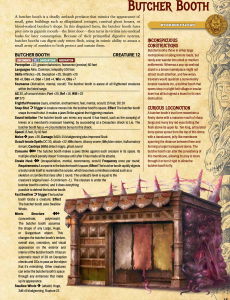
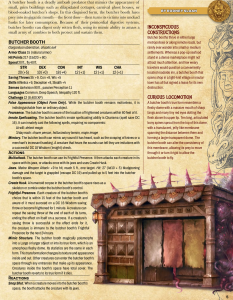
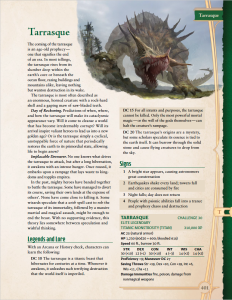
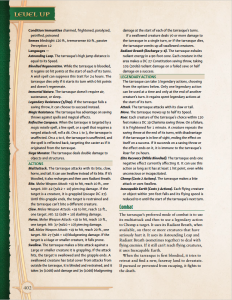

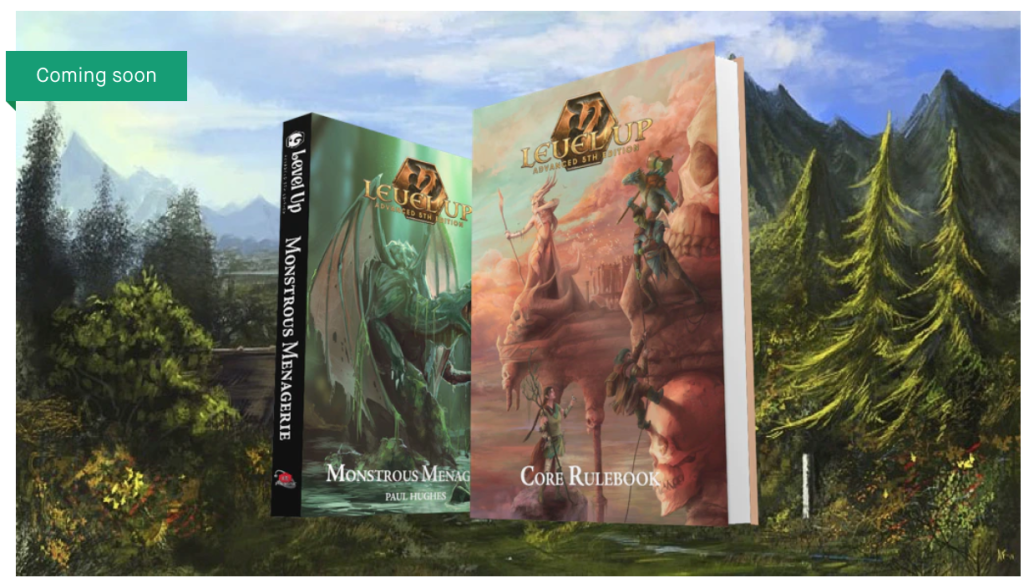
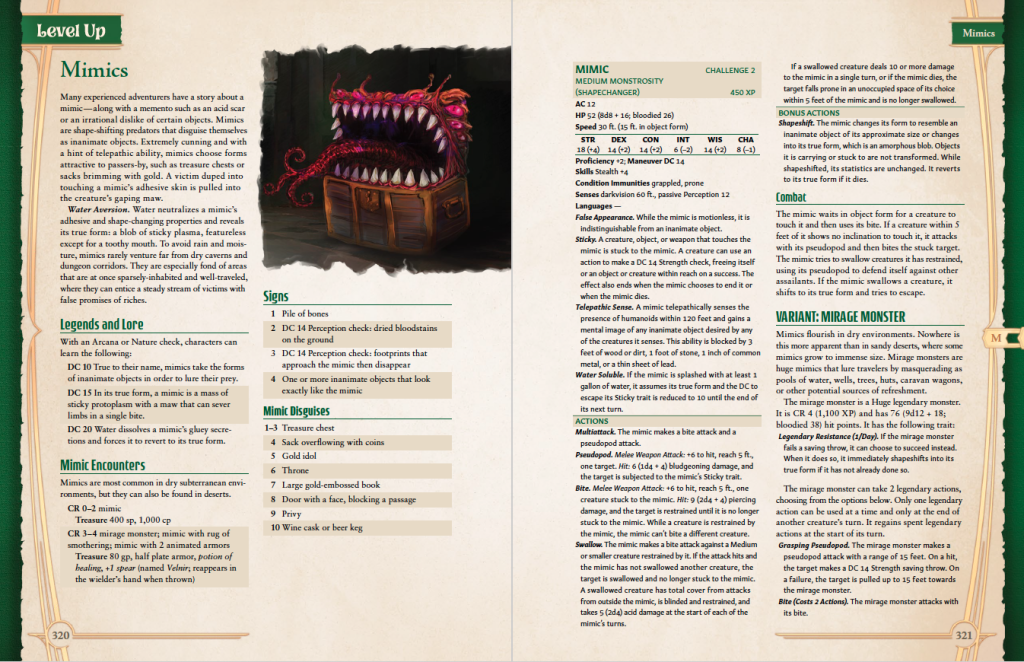
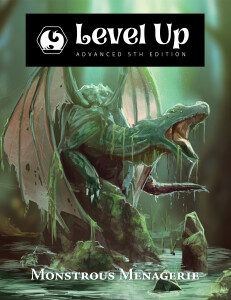 I’m a lead developer on enworld’s upcoming
I’m a lead developer on enworld’s upcoming 